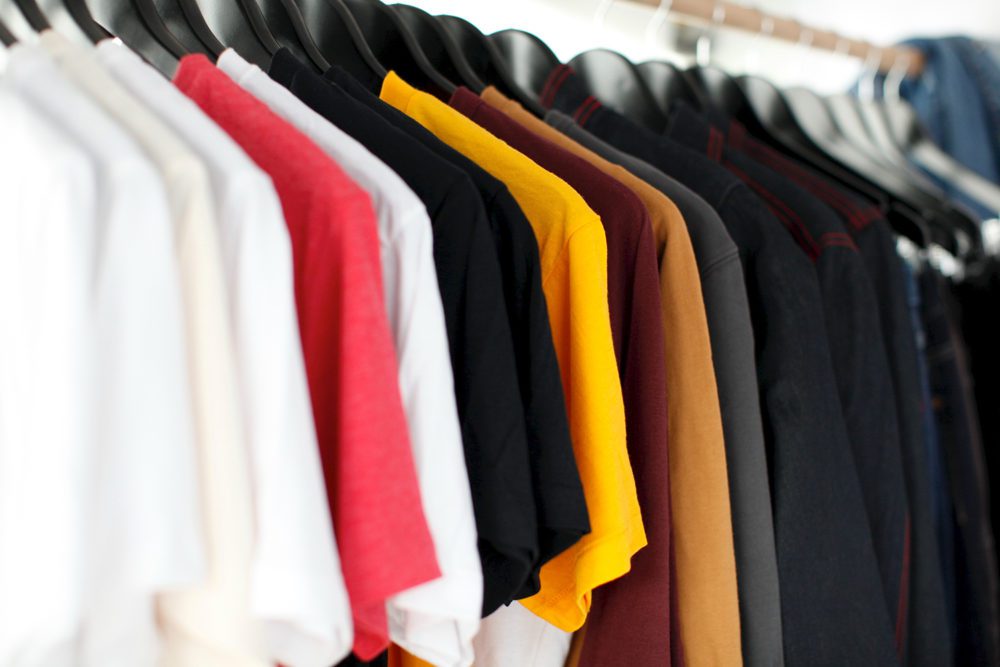We are undoubtedly living in a throwaway culture, with garment lifespans at an all-time low. According to research, the average lifespan of a garment is one to three years, which isn’t much at all. It’s quite common for shoppers to browse for new clothes on a near daily basis, whether it’s through visiting stores or browsing online. The affordability of fast fashion has certainly made clothes disposable, with no need to repair damaged pieces.
In line with environmental concerns, we will take a look at some of the ways you can preserve your wardrobe essentials, so they will serve you for the long-term and reduce shoppers’ overall contribution to the increasing issue of waste.

So, how do we make our clothes last longer?
Pre-purchase Quality Check
This sort of care happens pre-purchase. When you’re shopping for your garments, it’s definitely worth checking the quality of the seaming. Buy clothing with correctly sewed seams to make sure the clothes last longer and to prevent future issues. Turn the garment inside out and inspect the seam as well as running your fingers across and tugging at the thread. If it comes loose, the clothing will likely fall apart at some point, meaning you’ll either have to throw it out or repair it.
Also, to check the quality of the fabric, you can hold clothing up to the light. If you can see light coming in through the material, it’s not going to last you very long. You’ll reduce your carbon footprint by spending money on pricier, higher-quality clothing. Higher-quality clothing can be influenced by the shirt weave, for example men’s t-shirts can be made with unique weaving to become more breathable, lightweight and resistant to damage.
Washing and Drying Your Clothes
It may come as a surprise to learn that washing your clothes in a washing machine can eventually ruin them — the more often you wash them, the quicker they are worn out. It might sound pretty gross, but unless your clothes are pitted with dirt and stains, you don’t have to put them in a washing machine for a full wash.
Remove marks by spot-cleaning them. If you prefer to be prepared for pesky stains, you can purchase a stain remover roll on to eliminate marks. If you take pretty hot showers, consider bringing your clothes into the bathroom when you take a shower to steam them. As well as making your clothes last longer, this is beneficial for the environment. Statistics show that the average washing machine uses around 13,500 gallons of water each year, equivalent to the amount of water someone will drink in their whole life.
If your clothes are a bit whiffy, a crafty mix of lukewarm water and vodka will do the trick. Simply pour a solution of three parts water and two parts vodka into a spray bottle and mist all over. Alternatively, you can put your clothes in the freezer overnight to freshen them up. If the smell is a bit more stubborn, you’ll be pleasantly surprised about what an outside breeze can do to help your clothing.
When it’s time to actually wash your clothes, do it and wash at a lower heat — except for bedding, towels and underwear, which should be washed at 60°C minimum. Turn your clothes inside out so that if anything is being worn through, it’s the inside.
If you’re one of the very few people who haven’t shrank an item of clothing in a tumble dryer, congratulations, you’re a marvel. It’s not great when your socks come out big enough for a newborn baby. Drying your clothes in a dryer causes the most damage, so consider buying a clothes horse and air dry instead to avoid tears and warped material.
Learn Basic Repairs
How many clothes have you thrown out because of a hole or missing button? Learn basic sewing skills for mending clothing that’ll save you wasting money by throwing things out. For large holes and tears, you can even learn how to sew patches onto your clothing with similar material.
If you’re interested in revitalising your clothes in unique ways, you can even personalise your clothes with button badges. If your jeans have tears in, you could cut them into shorts or create ripped jeans for something different. The options are unlimited!
There are a few tricks you can use to make your clothes lasting longer. Fast fashion is one of the world’s largest polluters, so let’s all cut down and enjoy the clothes we have!
















